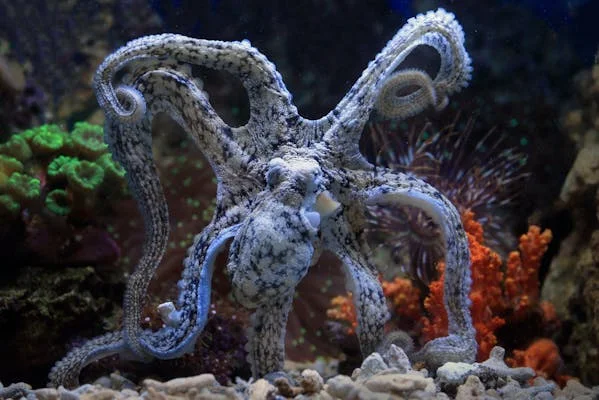The ocean hides countless wonders, but few are as fascinating as the Atlantic pygmy octopus (Octopus joubini). This diminutive yet extraordinary cephalopod has captured the interest of marine biologists and ocean enthusiasts alike due to its unique lifestyle and adaptability. In this article, we will delve deep into the world of the Atlantic pygmy octopus, exploring its habitat, diet, behavior, and survival strategies.
The Habitat of the Atlantic Pygmy Octopus
The Atlantic pygmy octopus primarily resides in the warm, shallow waters of the Atlantic Ocean, ranging from the Gulf of Mexico to the Caribbean Sea. Its preferred habitats include coral reefs, seagrass beds, and sandy ocean floors. These environments provide the perfect blend of shelter and food availability for the small but resourceful creature.
Adaptations to Its Environment
One of the most remarkable features of the Atlantic pygmy octopus is its ability to adapt to its surroundings. With an average body length of just 2-4 inches, excluding its arms, it can squeeze into crevices and hide within shells or under rocks. This skill not only aids in avoiding predators but also allows it to ambush prey effectively.
The octopus also possesses chromatophores, specialized cells that enable it to change color and texture. This camouflage ability helps it blend seamlessly into its environment, rendering it almost invisible to both predators and prey.
Diet and Feeding Habits
The Atlantic pygmy octopus is a carnivorous predator with a diet consisting mainly of small crustaceans, mollusks, and occasionally fish. Its hunting strategy is a mix of stealth and precision.
Hunting Techniques
- Ambush Hunting: The octopus often hides in crevices or burrows and waits for unsuspecting prey to pass by. Once in range, it pounces with incredible speed.
- Use of Venom: Like many octopuses, it injects venom to paralyze its prey before consuming it. This venom also helps break down the prey’s tissues, making it easier to digest.
Feeding Frequency
Due to its high metabolic rate, the Atlantic pygmy octopus needs to feed frequently. This constant need for sustenance keeps it active during both day and night, though it tends to be more nocturnal.
Social Behavior and Reproduction
The Atlantic pygmy octopus is a solitary creature, preferring to live and hunt alone. Interaction with others of its kind typically occurs only during mating.
Mating Rituals
Mating in Atlantic pygmy octopuses is a brief yet intricate process. The male uses a specialized arm called the hectocotylus to transfer spermatophores to the female. After mating, the male usually dies shortly after, while the female focuses on laying and protecting her eggs.
Egg Laying and Hatchlings
The female lays her eggs in a hidden and secure location, such as a crevice or under a rock. She guards them diligently, often foregoing food to ensure their safety. After the eggs hatch, the female’s role in their survival ends, as the young octopuses are left to fend for themselves.
Defense Mechanisms and Predators
Despite its small size, the Atlantic pygmy octopus employs a variety of defense mechanisms to evade predators.
Camouflage and Mimicry
Using its chromatophores, the octopus can blend into its surroundings or mimic other sea creatures. This not only helps it avoid predators but also allows it to sneak up on prey.
Ink Defense
When threatened, the octopus releases a cloud of ink to confuse and distract predators, giving it time to escape. The ink also contains compounds that can dull a predator’s sense of smell, making it harder to track the octopus.
Speed and Agility
With its jet propulsion system, the Atlantic pygmy octopus can move swiftly through the water to escape danger. By expelling water from its siphon, it propels itself rapidly in the opposite direction.
The Role of the Atlantic Pygmy Octopus in the Ecosystem
The Atlantic pygmy octopus plays a crucial role in maintaining the balance of its ecosystem. As both predator and prey, it occupies a vital spot in the food chain.
As a Predator
By feeding on crustaceans and mollusks, the octopus helps control their populations, preventing overgrazing on seagrass beds and coral reefs.
As Prey
The Atlantic pygmy octopus is a food source for various marine predators, including larger fish, sharks, and sea birds. Its survival strategies highlight the delicate balance between predation and adaptation in marine ecosystems.
Fascinating Facts About the Atlantic Pygmy Octopus
- Lifespan: This species has a short lifespan of approximately one year, which is common among small octopuses.
- Tool Use: Some Atlantic pygmy octopuses have been observed using shells and debris as tools for shelter or defense.
- Intelligence: Despite its small size, the octopus is highly intelligent, capable of problem-solving and learning from experience.
Conclusion
The Atlantic pygmy octopus is a testament to the marvels of marine life. Its adaptability, intelligence, and survival strategies make it a fascinating subject of study. Understanding this remarkable creature not only enriches our knowledge of the ocean but also highlights the importance of preserving marine ecosystems. What other secrets might the ocean hold?
FAQs About the Atlantic Pygmy Octopus
1. Where can I find the Atlantic pygmy octopus?
The atlantic pygmy octopus lifestyle is found in the warm, shallow waters of the Atlantic Ocean, particularly in the Gulf of Mexico and the Caribbean Sea.
2. What does the atlantic pygmy octopus lifestyle eat?
It primarily feeds on small crustaceans, mollusks, and fish.
3. How does the atlantic pygmy octopus lifestyle defend itself?
The octopus uses camouflage, ink clouds, and rapid propulsion to evade predators.





